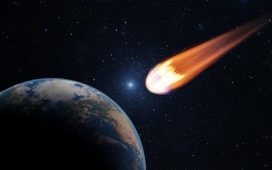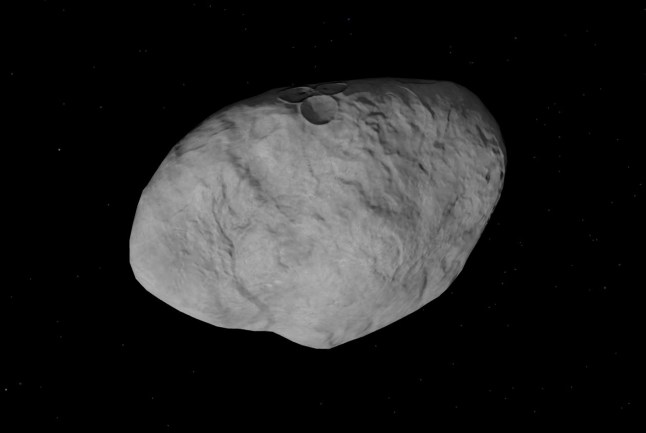
This Sunday, an asteroid larger than Manhattan – large enough it could end civilization, or at least wreck a country – is casually flying by Earth.
Don’t panic. This rocky beast named (887) Alinda has zero chance of hitting the blue marble anytime soon.
But Jake Foster, a public astronomy officer at the Royal Observatory Greenwich, has a few ideas of what would happen if it did.
We wouldn’t have a good time, it’s safe to say.
‘The effects would undoubtedly be globally catastrophic,’ he told Metro.
‘With an estimated size of 4.2km wide, it is around one third of the size of the asteroid that led to the extinction of the dinosaurs, which was estimated to be between 10 and 15km wide.’
What are asteroids? And what is 887 Alinda?
Asteroids, sometimes as small as six feet or as large as mountains, are craggy lumps of space rock made from the ancient leftovers of the early solar system.
Many orbit the sun in much the same way as planets do. Alinda, likely named after the ancient city of the same name, orbits every 3.89 years.
When Alinda flits by us in a few days, it will be a close-ish distance of 7,630,000 miles away, the closest it’s got in 100 years.
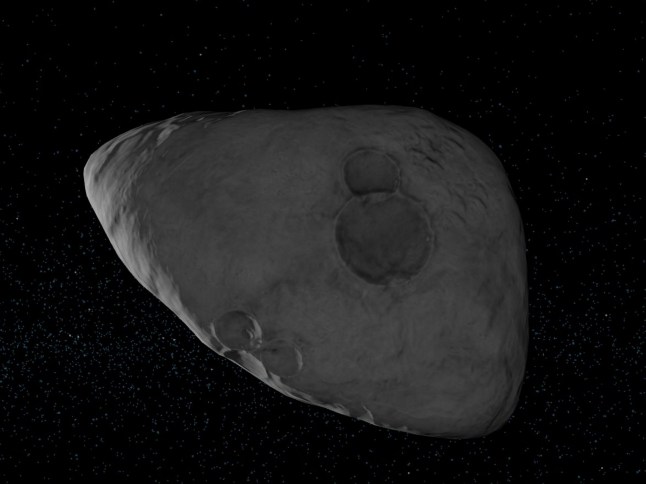
At this distance, stargazers craning their necks up will see the rock as a bright whizzing speck for about 10 days in the Northern Hemisphere by the constellations of Orion and Gemini.
On Sunday, it might be bright enough to be seen with the naked eye.
While it’s not close enough to be classed as a ‘near Earth asteroid’, something this big getting anywhere near to Earth only happens once every decade or so, according to the Virtual Telescope Project.
Alinda, larger than 99% of asteroids, is one of the five largest cosmic pebbles that will get within 15,000,000,000km of us from now until 2200, the space-watching website says.
A 4km asteroid could unleash ‘millions of nuclear bombs’
As large as Alinda is, it’s nothing compared to the rock that abruptly ended the age of the dinosaurs 66,000,000 years ago.
This apocalyptic object, the Chicxulub impactor, slammed into the sea just off the coast of modern-day Mexico. From it, shock waves, earthquakes and megatsunamis splattered out, plunging the planet into a long winter.
According to Foster, even though Alinda isn’t as large as the Chicxulub impactor, an object of its size colliding with the Earth would unleash the equivalent of ‘millions of nuclear bombs’.
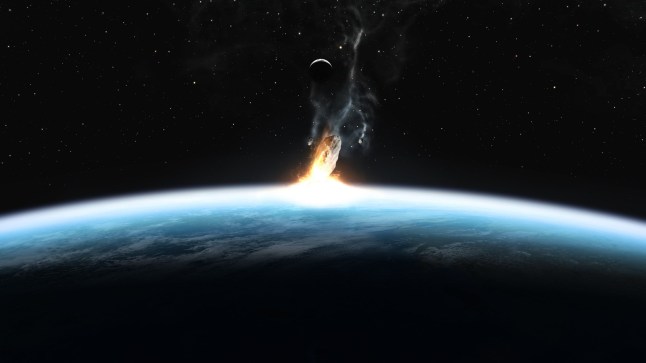
‘The shockwave that follows would likely flatten anything within a few hundred kilometres,’ he added. ‘Those lucky enough to escape the initial destruction would need to contend with the devastating after-effects.
‘Earthquakes would likely be felt across the planet, with enormous tidal waves triggered by the tectonic activity.’
Debris and dust would swallow up the sky, Foster added, causing an ‘impact winter’.
‘Disruptions to ecosystems and animal life would be severe, with multiple species extinctions expected,’ he said.
How on earth could, well, Earth, defend itself from an asteroid?
As scary as this all sounds, this is how experts like Foster and planetary defence researchers have to think to keep people safe.
The odds of an asteroid capable of destroying a city are only 1% per century. No rocks larger than a kilometre are expected to get anywhere near us for at least the next 1,000 years.
So while close approaches like Alinda might have most people rubbing the sweat off their brows, when these titanic rocks do ping on radars, it gives crucial data to space agencies to know how to fend off killer asteroids.
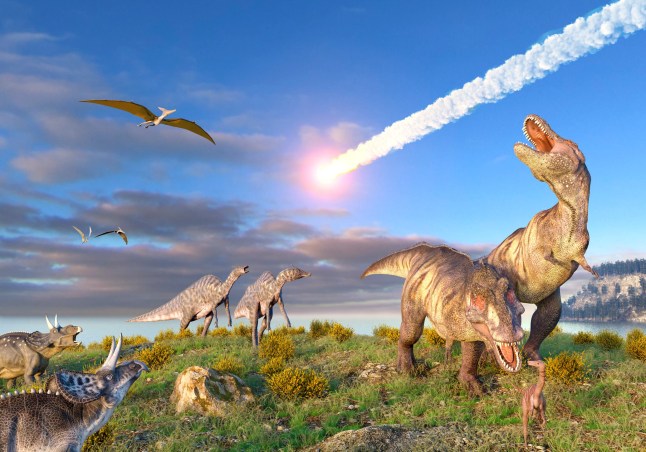
Take Scout. It’s a software system by Nasa that uses asteroid hunters’ observations of near-Earth objects to work out approximately when and where they will impact the planet.
One new asteroid hunter on the scene is the 8.4-metre telescope inside the Vera C Rubin Observatory in Chile, set to get up and running this year.
Michael Smith, a professor of astronomy at the University of Kent, told Metro that the observatory will play a big part in planetary defence.
‘In recent years, we have learnt an incredible amount about potential asteroids which could damage our planet,’ Smith said.
‘The new telescope should aid detection as we learn to guard our bit of space.’
If the Rubin Observatory spotted an asteroid heading our way, the world has a few options to protect itself.
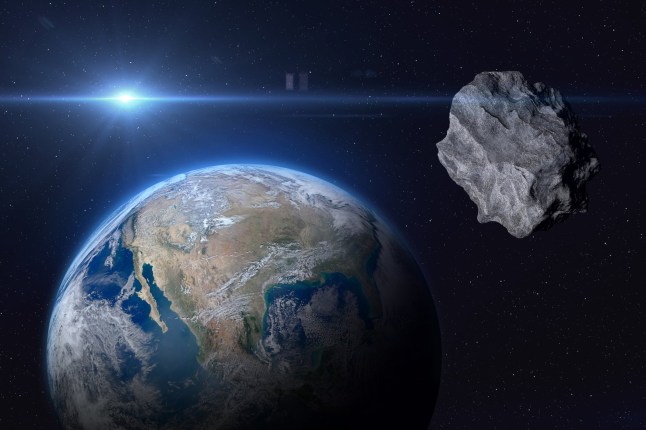
Nuclear weapons could be used to destroy it, or a spacecraft thrown hard enough at it could, at the very least, gently nudge the rock away.
One plan, for example, involves shooting a mega pulse of radiation from a nuclear blast at an asteroid to send it packing.
Or space officials play the long game by deploying a ‘gravity tractor’ – a spacecraft – that would fly alongside an asteroid and tug on the rock to change its course.
The next time Alinda will pay us Earthlings a visit isn’t until January 25, 2087, as it hurtles near us as 11.3km/s.
Foster said that if Alinda ever did smack into the Earth, the impact ‘would change life as we know it on this planet’.
‘Luckily,’ he added, ‘there is no chance of Alinda coming close enough to be a concern to us.’
Get in touch with our news team by emailing us at webnews@metro.co.uk.
For more stories like this, check our news page.
MORE: Here’s how to see a once-in-a-160,000-year comet next week
MORE: Tolkien and Prokofiev ‘pictured on Mercury’ in incredible new space images
MORE: New telescope could finally prove there is an elusive ‘Planet X’ in our solar system





